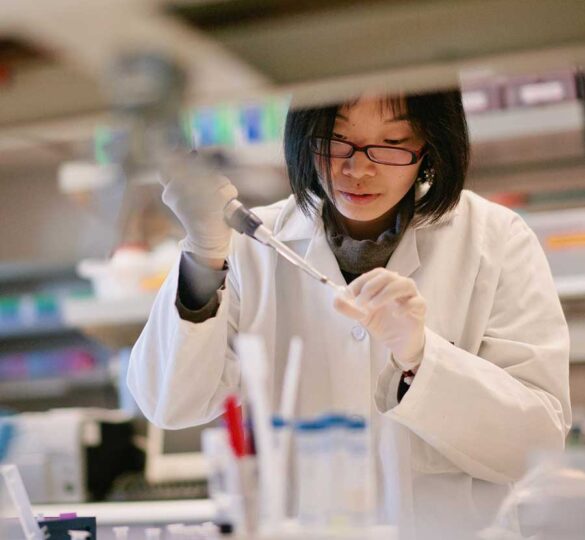Restoring Vision in Glaucoma: More than Meets the Eye

New strategies are needed to rethink how we treat glaucoma to do more than just manage eye pressure — to actually restore vision by promoting the survival of retinal ganglion cells and their axons.
When most of us talk about glaucoma, we talk about pressure in the eye: how high, how low, how many drops each day, etc. And for good reason — glaucoma is about sensitivity to eye pressure.
Clinically, the goal is to manage pressure to stabilize vision. While eye pressure relates to structures in the front of the eye that regulate fluid flow, sensitivity to pressure relates to the back of the eye. There, stress from glaucoma affects the retina and optic nerve, which collect visual information and transmit it to the brain. Specialized neurons called retinal ganglion cells provide long cable-like axons that form the optic nerve. In glaucoma, sensitivity to eye pressure causes these axons to degenerate, followed by death of the ganglion cells themselves. As more and more ganglion cells die, abnormalities that may not be apparent to the patient can be detected on tests such as the visual field examination, and eventually, noticeable vision loss can occur. Ganglion cell death is permanent, for now. At Glaucoma Research Foundation, our goal is to change that.
The retina and optic nerve are part of the central nervous system, like the brain and spinal cord. When they are damaged beyond a certain extent, central nervous system structures do not regenerate. The same limitation applies to the retina and optic nerve. Thus, new strategies are needed to rethink how we treat glaucoma to do more than just manage eye pressure — to actually restore vision by promoting the survival of retinal ganglion cells and their axons. Glaucoma Research Foundation has had a longstanding interest in supporting research that focuses on neuroprotection: strategies that help struggling ganglion cells become less susceptible to glaucoma and prevent degeneration.
Agents that are neuroprotective would be most beneficial for patients newly diagnosed with early glaucoma. At the other end of the spectrum, new research shows promise for neuroregeneration: strategies that either help dying ganglion cells sprout new axons or replace lost ganglion cells altogether. These therapies, which include stem cell transplantation, work around the natural limitations of the central nervous system to repopulate the optic nerve. They would benefit those who already have significant vision loss from glaucoma.
Glaucoma Research Foundation is committed to helping develop both protective and regenerative strategies through the Steven and Michele Kirsch Catalyst for a Cure Vision Restoration Initiative and Shaffer Grant research programs.
To this end, GRF hosted another Catalyst Meeting in 2021. By partnering with BrightFocus Foundation, this virtual meeting brought together thought leaders not only in glaucoma, but also Alzheimer’s disease. Goals include finding common elements in the mechanistic undertones of neurodegeneration and identifying barriers to regenerating new neural tissue. By learning from one another, scientists across different domains of neuroscience can help accelerate the search for the next generation of innovative treatments.
Article by David J. Calkins, PhD.
Posted on May 3, 2021; Reviewed on April 28, 2022.

David J. Calkins, PhD
Dr. Calkins is the Denis M. O’Day Professor of Ophthalmology and Visual Sciences and Vice-Chairman and Director for Research at The Vanderbilt Eye Institute, Vanderbilt University Medical Center in Nashville, Tennessee.